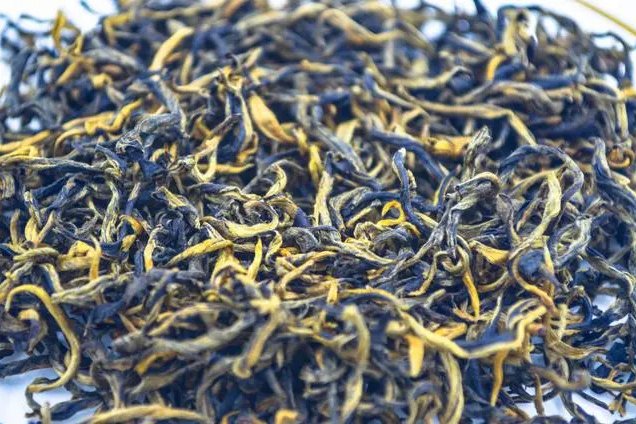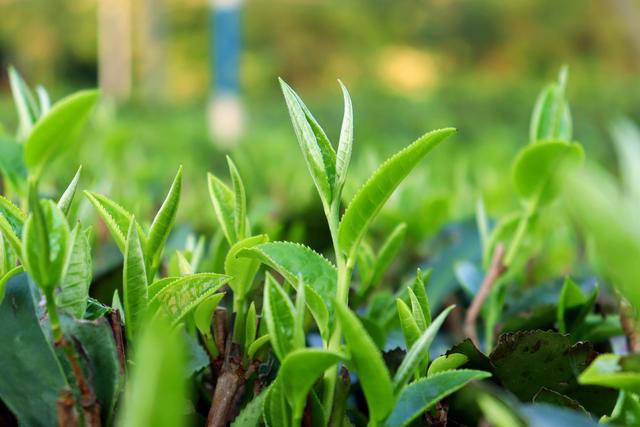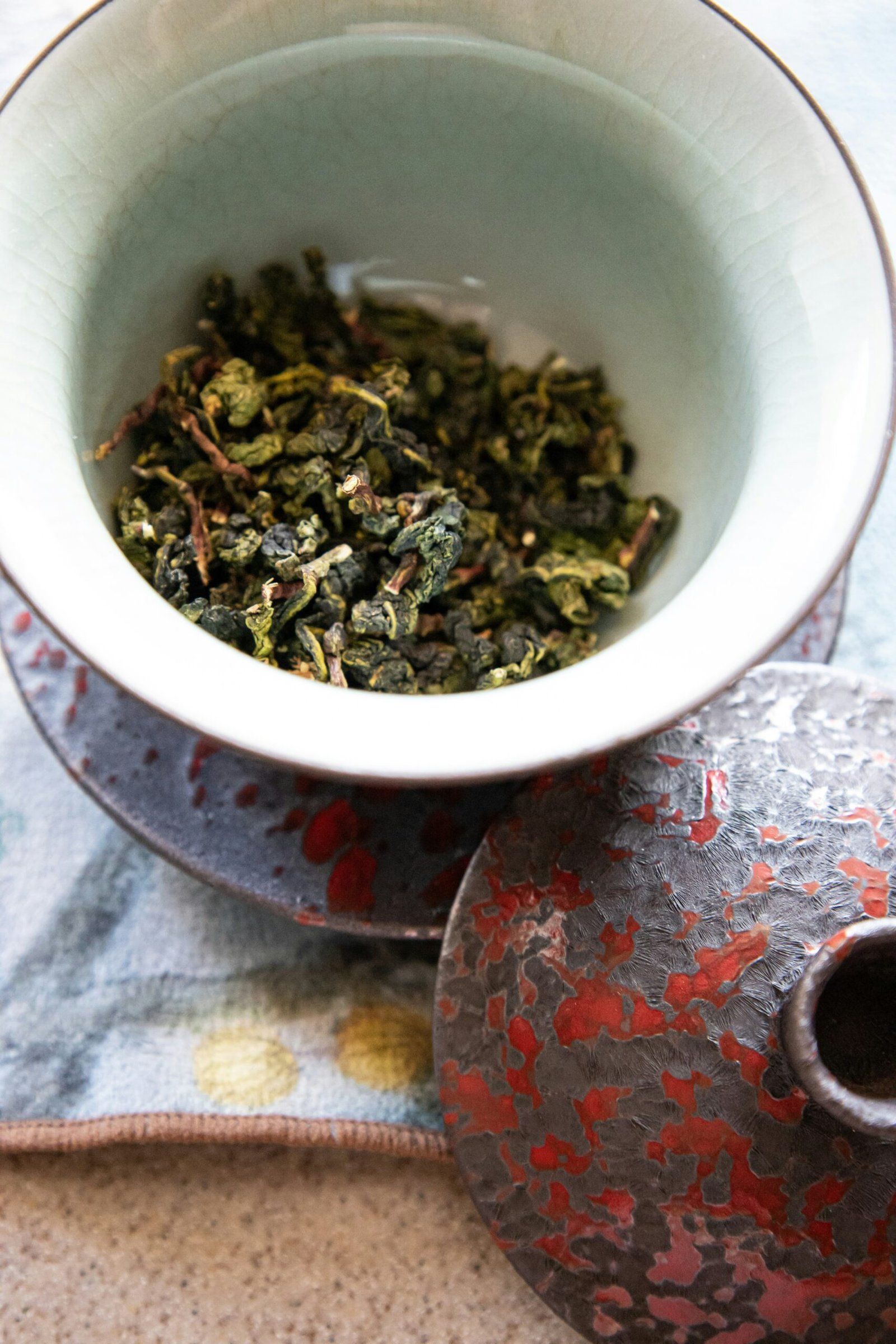Introduction au thé noir chinois
Chinese black tea, often referred to as “hong cha” in Mandarin, is a unique variety of tea distinguished by its rich flavor and dark color. Unlike other major tea types such as green or white tea, black tea undergoes a comprehensive fermentation process that not only impacts its taste but also enhances its shelf-life. The botanical roots of black tea can be traced to the Camellia sinensis plant, a shrub native to several parts of China. Renowned for its oxidized leaves that produce a robust, malty flavor profile, Chinese black tea has gained immense popularity both domestically and internationally.
Among the diverse types of Chinese black tea, several traditional varieties stand out, each with its distinct characteristics. For instance, Keemun tea, hailing from Qimen County in Anhui Province, is celebrated for its floral and fruity notes. Meanwhile, Lapsang Souchong, originating from the Wuyi Mountains in Fujian Province, is unique due to its smokey aroma and flavor, achieved through a specific drying process over pine wood fires. The diverse climates and soils of China’s tea-growing regions contribute to this rich array of flavors and aromas, further elevating the status of black tea in the world of Chinese tea.
The cultural significance of Chinese black tea extends far beyond its taste. Historically, it has played a pivotal role in China’s trade interactions with the world, especially during the era of the famous Tea Horse Road and Silk Road. The ceremonial usage of tea in Chinese culture also underscores its importance; it is not only a beverage but a medium of socialization and spiritual introspection. This deep-rooted tradition has contributed to Chinese black tea’s esteemed reputation on the global stage, symbolizing grace, hospitality, and antique tradition.
In conclusion, the essence of Chinese black tea lies in its intricate production methods, regional diversity, and cultural heritage, making it a characteristic hallmark of China’s rich and storied tea culture.
Historical Significance
Chinese black tea has a rich historical tapestry that dates back to the Tang and Song dynasties, where its initial production began. During the Tang dynasty (618-907 AD), tea culture blossomed with tea being recognized not just as a beverage but also as a critical element of Chinese artistry and daily life. Black tea, known in China as “hong cha,” meaning red tea, gradually began to distinguish itself from other varieties. Its distinctive oxidation process set it apart, giving it the unique flavor and character that have become hallmarks of Chinese tea.
The Song dynasty (960-1279 AD) witnessed further refinement of tea production techniques, paving the way for the evolution of thé noir. It wasn’t until the Ming dynasty (1368-1644 AD) that thé noir started to gain significant prominence. However, it was during the Qing dynasty (1644-1912 AD) that thé noir reached its zenith of popularity and was elevated to a symbol of Chinese cultural heritage.
Key historical events significantly impacted the dissemination of Chinese black tea both domestically and internationally. The Silk Road played a crucial role in the early trade of tea, facilitating cultural and economic exchange. This ancient trade route enabled thé noir to travel across continents, reaching Europe and beyond. The 17th century marked a period of extensive tea trade between China and European nations, particularly with the British East India Company. This exchange led to the introduction of Chinese black tea in Europe, where it was avidly consumed and highly valued.
Consequently, the historical evolution and trade of Chinese black tea not only underscored its importance within China but also cemented its status as a global commodity. The cultural reverence for Chinese tea and its methodical preparation remains pivotal, reflecting centuries of tradition and historical significance. Thus, understanding the historical development of Chinese black tea offers profound insights into the intricate fabric of Chinese tea culture and its global influence.
Cultural Importance
Chinese black tea holds a revered place within the vast tapestry of Chinese society and culture. This traditional beverage extends beyond mere consumption; it is often viewed as a bridge connecting the past with the present, embodying both historical significance and modern-day appreciation. One of the most notable aspects of Chinese black tea is its profound role in the Gongfu tea ceremony, a practice that emphasizes the artful, meticulous preparation of tea to enhance its flavor profile and promote mindfulness. Through this ceremony, participants engage in a meditative experience that fosters community and introspection, underscoring the cultural depth of Chinese tea rituals.
Social gatherings often feature Chinese black tea as a central element, symbolizing hospitality and a sense of shared experience. During these gatherings, serving tea is not just a gesture but a meticulous process imbued with respect and grace. Historical anecdotes and folklore detail how important figures, like emperors and scholars, have long praised thé noir for its unique characteristics and soothing properties. For instance, black tea’s reputed ability to enhance mental clarity and relaxation is celebrated in many traditional tales, highlighting its embedded cultural significance.
Moreover, customs surrounding Chinese black tea have evolved over centuries, reflecting the beverage’s integral role in daily life and special occasions. In many families, the preparation and enjoyment of tea are nostalgic rituals, passed down through generations, steeping each cup in layers of meaning and tradition. It is during these moments that the cultural richness of Chinese tea culture comes to life, turning a simple commodity into a symbol of heritage and unity.
Ultimately, Chinese black tea’s persistent presence in ceremonies, social customs, and folklore underscores its integral role in the cultural fabric of China. It is more than a drink; it is a timeless connector of people and traditions.“`html
Economic Impact
Chinese black tea plays a significant role in both the historical and contemporary economic landscape of China. Historically, thé noir was a major commodity along the ancient trade routes, such as the Silk Road, where it was traded for spices, textiles, and other goods. This not only facilitated cultural exchanges but also provided substantial revenue for local economies in tea-producing regions. Today, the Chinese tea industry continues to thrive, with thé noir being a key component.
The tea trade contributes significantly to the economies of regions like Fujian, Yunnan, and Anhui, where ideal climate and soil conditions produce high-quality crops. These regions have developed extensive infrastructures dedicated to the cultivation, processing, and marketing of Chinese black tea. According to the China Tea Marketing Association, tea production in these areas accounted for approximately 40% of the country’s total tea output in recent years.
On a global scale, China is one of the largest producers and exporters of black tea. In 2022, China exported over 350,000 metric tons of tea globally, with thé noir constituting a substantial part of these exports. The revenue generated from this export activity is estimated to be in the range of several billion dollars annually, cementing China’s position as a leading player in the global tea market. Notably, key markets for Chinese black tea include the United States, United Kingdom, and Germany, where there is a growing appreciation for its distinct flavors and health benefits.
In contemporary times, the economic importance of thé noir in China extends beyond mere production and export. The burgeoning interest in tea culture has boosted tourism in tea-growing regions, where visitors engage in tea-tasting tours, visit tea museums, and participate in cérémonies du thé. This cultural tourism generates additional revenue and promotes local craftsmanship, further enriching the socio-economic fabric of these communities. Thus, Chinese black tea not only sustains traditional economic activities but also fosters innovation and growth in related sectors.
Varieties of Chinese Black Tea
Chinese black tea, known for its rich, profound flavors and aromatic profiles, encompasses a broad spectrum of varieties, each with distinctive characteristics. These renowned teas have become staples in tea culture both within China and across the globe. Among the most celebrated types are Lapsang Souchong, Keemun, and Yunnan Red, each contributing uniquely to the world of Chinese tea.
Lapsang Souchong, also called Zheng Shan Xiao Zhong, hails from the Wuyi region of Fujian Province. It is distinguished by its smoky aroma and robust flavor, owing to the traditional drying process over pinewood fires. This method infuses the leaves with a characteristic smokiness, making it a favorite for those who enjoy bold, intense teas. To brew Lapsang Souchong, use boiling water and steep for three to five minutes, adjusting flavor strength to personal preference.
Keemun, or Qimen Hong Cha, is another esteemed variety originating from Qimen County in Anhui Province. Often referred to as the “Burgundy of teas” for its complex flavor and fragrance, Keemun boasts a wine-like sweetness with hints of fruit, flowers, and pine. The leaves produce a beautiful crimson-gold liquor when brewed. To enjoy Keemun, it is best brewed with water right off the boil and steeped for four minutes, allowing its delicate and aromatic qualities to fully develop.
Yunnan Red, known locally as Dian Hong, comes from the Yunnan Province, an area celebrated for its ancient tea trees. This variety is prized for its malty, smooth taste with notes of chocolate and honey. Yunnan Red is also characterized by its rich, amber-colored brew and large, golden-tipped leaves. Using water just below boiling and a steep time of three to four minutes will render the best flavor from this tea.
These remarkable varieties exemplify the diversity and depth of Chinese black tea, offering a wide range of experiences for tea enthusiasts worldwide. Each type showcases unique processing techniques and regional characteristics, underscoring why Chinese tea holds a revered place within global tea culture.
Health Benefits
Chinese black tea has long been celebrated for its numerous health benefits, supported by both scientific studies and traditional beliefs. One of the most widely recognized advantages of Chinese tea, particularly thé noir, is its potent antioxidant properties. Rich in polyphenols, such as theaflavins and thearubigins, Chinese black tea helps protect the body from oxidative stress and reduces inflammation, thereby contributing to overall health and longevity.
Another significant benefit linked to the consumption of Chinese black tea is its potential role in improving heart health. Multiple studies have suggested that regular consumption of thé noir can lower cholesterol levels and reduce blood pressure, which in turn decreases the risk of heart disease. The flavonoids found in this type of tea are particularly beneficial in promoting cardiovascular health by improving blood vessel function and reducing the formation of blood clots.
Traditional Chinese medicine also highlights the digestive benefits of thé noir. The tannins present in Chinese black tea have a soothing effect on the digestive tract and can help alleviate gastrointestinal discomfort. Furthermore, it is believed that drinking thé noir after meals can aid in digestion by stimulating the secretion of digestive enzymes and enhancing the breakdown of food in the stomach.
Chinese black tea is also known for its ability to boost mental alertness and cognitive function. This benefit can be attributed to the moderate caffeine content in the tea, which enhances focus and concentration without leading to the jitteriness often associated with other caffeinated beverages. Additionally, the amino acid L-theanine found in black tea promotes relaxation and reduces stress, creating a balanced state of alertness that supports mental performance.
In summary, the health benefits of Chinese black tea extend across various domains, from heart health and digestion to mental alertness and antioxidative protection. Its unique composition makes it not only a cherished part of Chinese culture but also a valuable addition to a healthy lifestyle.
Brewing and Consumption
Mastering the art of brewing Chinese black tea is essential to unlocking its profound flavors and numerous health benefits. Traditional Chinese brewing techniques emphasize precision and attention to detail, aimed at creating an optimal tea experience. The Gongfu Cha method, often utilized in China, involves using a higher tea-to-water ratio, shorter infusion times, and multiple steeping rounds. A small teapot, usually made of Yixing clay or porcelain, is favored for its heat retention properties and ability to enhance the tea’s aroma.
To begin, one must meticulously select high-quality Chinese black tea leaves. These leaves should be well-oxidized, exhibiting a rich, dark hue, and an enticing aroma. The chosen water should ideally be spring or filtered water to retain the tea’s purity, with an optimal temperature of around 90°C to 95°C. An initial rinse of the leaves with hot water is recommended to awaken their flavors. The first infusion should last about 20 to 30 seconds, with subsequent infusions gradually increasing in duration.
Modern methods have simplified the process without sacrifying the tea’s integrity. Using teapots or infusers, one can steep the tea leaves for three to five minutes, depending on personal preference. It is crucial not to over-steep the tea, as this can result in a bitter taste. For those pressed for time, tea sachets offer a convenient alternative, though they might lack the depth of flavor achieved through traditional techniques.
In China, the consumption of black tea is integrated into daily life and cultural practices. It is often sipped slowly, appreciated for its complex layers of taste. In contrast, other parts of the world may consume Chinese black tea with milk or sweeteners, adapting the tradition to local palates. However, irrespective of the method, the essence of Chinese tea culture perseveres, encapsulating centuries of tradition and meticulous craftsmanship.
Global Influence and Modern Trends
Chinese black tea has long been a pivotal element in the global tea culture, significantly shaping tea traditions worldwide. Its robust and distinctive flavor profile has not only carved a niche in Western tea practices but has also set a standard of excellence. The British afternoon tea tradition, for example, largely owes its origin and refinement to Chinese tea. The initial imports of black tea into Europe set the stage for what would become one of the most iconic rituals in Western societies.
Over the years, Chinese black tea has become an integral part of numerous tea blends and flavored teas. Renowned blends like English Breakfast and Earl Grey prominently feature black tea as a core component. The versatility of Chinese tea allows it to be paired with a variety of flavors, from floral and spicy to fruity and citrus notes, thereby expanding its appeal to a broader audience. Its rich and full-bodied essence is also leveraged in culinary applications, ranging from tea-infused desserts to savory dishes, illustrating its widespread adaptability and culinary appeal.
In recent years, the trend toward artisanal teas has spotlighted the rich heritage and diverse varieties of Chinese black tea. Tea enthusiasts are increasingly seeking out high-quality, single-origin teas, which offer a nuanced flavor experience reflective of their specific terroir and processing methods. This shift towards artisanal tea represents a growing appreciation for the craftsmanship inherent in the traditional production of Chinese tea, reaffirming its esteemed place in contemporary tea culture.
Moreover, the burgeoning phenomenon of tea tourism has further underscored the significance of Chinese black tea. Travelers from around the world are flocking to China to immerse themselves in its tea culture, visit historic tea plantations, and participate in authentic cérémonies du thé. This cultural exchange fosters a deeper understanding and appreciation of Chinese tea, reinforcing its status as a global emblem of refinement and tradition.













